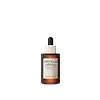What's inside
What's inside
 Key Ingredients
Key Ingredients

 Benefits
Benefits

 Concerns
Concerns

 Ingredients Side-by-side
Ingredients Side-by-side

Ivermectin 1%
Carbomer
Emulsion StabilisingCetyl Alcohol
EmollientCitric Acid
BufferingCocamide DEA
EmulsifyingDimethicone
EmollientDimethyl Isosorbide
SolventDisodium EDTA
Glycerin
HumectantIsopropyl Palmitate
EmollientMethylparaben
PreservativePropylparaben
PreservativeWater
Skin ConditioningSodium Hydroxide
BufferingSodium Lauryl Sulfate
CleansingStearyl Alcohol
EmollientCentella Asiatica Extract
CleansingButylene Glycol
HumectantGlycerin
HumectantWater
Skin ConditioningPropanediol
SolventCaprylic/Capric Triglyceride
MaskingNiacinamide
SmoothingLactobacillus/Centella Asiatica Extract Ferment Filtrate
Skin Conditioning1,2-Hexanediol
Skin ConditioningDipropylene Glycol
HumectantPolyglyceryl-3 Distearate
EmulsifyingAcrylates/C10-30 Alkyl Acrylate Crosspolymer
Emulsion StabilisingC14-22 Alcohols
Emulsion StabilisingArginine
MaskingHydrogenated Lecithin
EmulsifyingBetaine
HumectantAllantoin
Skin ConditioningPanthenol
Skin ConditioningHydroxystearic Acid
CleansingEthylhexylglycerin
Skin ConditioningHydroxyethyl Acrylate/Sodium Acryloyldimethyl Taurate Copolymer
Emulsion StabilisingGlyceryl Stearate Citrate
EmollientSodium Polyacrylate
AbsorbentAdenosine
Skin ConditioningC12-20 Alkyl Glucoside
EmulsifyingCetearyl Alcohol
EmollientXanthan Gum
EmulsifyingMacadamia Ternifolia Seed Oil
EmollientSodium Phytate
Sodium Hyaluronate
HumectantStearic Acid
CleansingCeramide NP
Skin ConditioningGlyceryl Acrylate/Acrylic Acid Copolymer
HumectantSorbitan Isostearate
EmulsifyingPolyglyceryl-10 Myristate
Skin ConditioningMadecassic Acid
Skin ConditioningAsiaticoside
AntioxidantPhytosphingosine
Skin ConditioningAsiatic Acid
Skin ConditioningSucrose Distearate
EmollientPolyglutamic Acid
Skin ConditioningGlucose
HumectantLauric Acid
CleansingPhytosterols
Skin ConditioningCentella Asiatica Extract, Butylene Glycol, Glycerin, Water, Propanediol, Caprylic/Capric Triglyceride, Niacinamide, Lactobacillus/Centella Asiatica Extract Ferment Filtrate, 1,2-Hexanediol, Dipropylene Glycol, Polyglyceryl-3 Distearate, Acrylates/C10-30 Alkyl Acrylate Crosspolymer, C14-22 Alcohols, Arginine, Hydrogenated Lecithin, Betaine, Allantoin, Panthenol, Hydroxystearic Acid, Ethylhexylglycerin, Hydroxyethyl Acrylate/Sodium Acryloyldimethyl Taurate Copolymer, Glyceryl Stearate Citrate, Sodium Polyacrylate, Adenosine, C12-20 Alkyl Glucoside, Cetearyl Alcohol, Xanthan Gum, Macadamia Ternifolia Seed Oil, Sodium Phytate, Sodium Hyaluronate, Stearic Acid, Ceramide NP, Glyceryl Acrylate/Acrylic Acid Copolymer, Sorbitan Isostearate, Polyglyceryl-10 Myristate, Madecassic Acid, Asiaticoside, Phytosphingosine, Asiatic Acid, Sucrose Distearate, Polyglutamic Acid, Glucose, Lauric Acid, Phytosterols
 Reviews
Reviews

Alternatives
Ingredients Explained
These ingredients are found in both products.
Ingredients higher up in an ingredient list are typically present in a larger amount.
Glycerin is already naturally found in your skin. It helps moisturize and protect your skin.
A study from 2016 found glycerin to be more effective as a humectant than AHAs and hyaluronic acid.
As a humectant, it helps the skin stay hydrated by pulling moisture to your skin. The low molecular weight of glycerin allows it to pull moisture into the deeper layers of your skin.
Hydrated skin improves your skin barrier; Your skin barrier helps protect against irritants and bacteria.
Glycerin has also been found to have antimicrobial and antiviral properties. Due to these properties, glycerin is often used in wound and burn treatments.
In cosmetics, glycerin is usually derived from plants such as soybean or palm. However, it can also be sourced from animals, such as tallow or animal fat.
This ingredient is organic, colorless, odorless, and non-toxic.
Glycerin is the name for this ingredient in American English. British English uses Glycerol/Glycerine.
Learn more about GlycerinWater. It's the most common cosmetic ingredient of all. You'll usually see it at the top of ingredient lists, meaning that it makes up the largest part of the product.
So why is it so popular? Water most often acts as a solvent - this means that it helps dissolve other ingredients into the formulation.
You'll also recognize water as that liquid we all need to stay alive. If you see this, drink a glass of water. Stay hydrated!
Learn more about Water